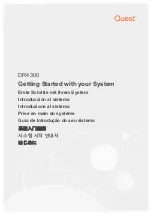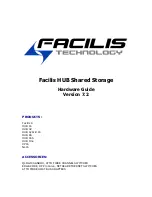
AT45DB321
6
cause the device to be in a busy state: Main Memory Page
to Buffer Transfer, Main Memory Page to Buffer Compare,
Buffer to Main Memory Page Program with Built-In Erase,
Buffer to Main Memory Page Program without Built-In
Erase, Page Erase, Block Erase, Main Memory Page Pro-
gram, and Auto Page Rewrite.
The result of the most recent Main Memory Page to Buffer
Compare operation is indicated using bit 6 of the status
register. If bit 6 is a 0, then the data in the main memory
page matches the data in the buffer. If bit 6 is a 1, then at
least one bit of the data in the main memory page does not
match the data in the buffer.
The device density is indicated using bits 5, 4, and 3 of the
status register. For the AT45DB321, the three bits are 1, 1,
and 0. The decimal value of these three binary bits does
not equate to the device density; the three bits represent a
combinational code relating to differing densities of Serial
DataFlash devices, allowing a total of eight different density
configurations.
Read/Program Mode Summary
The modes listed above can be separated into two groups
— modes which make use of the flash memory array
(Group A) and modes which do not make use of the flash
memory array (Group B).
Group A modes consist of:
1.
Main Memory Page Read
2.
Main Memory Page to Buffer 1 (or 2) Transfer
3.
Main Memory Page to Buffer 1 (or 2) Compare
4.
Buffer 1 (or 2) to Main Memory Page Program With
Built-In Erase
5.
Buffer 1 (or 2) to Main Memory Page Program With-
out Built-In Erase
6.
Page Erase
7.
Block Erase
8.
Main Memory Page Program
9.
Auto Page Rewrite
Group B modes consist of:
1.
Buffer 1 (or 2) Read
2.
Buffer 1 (or 2) Write
3.
Status Register Read
If a Group A mode is in progress (not fully completed) then
another mode in Group A should not be started. However,
during this time in which a Group A mode is in progress,
modes in Group B can be started.
This gives the Serial DataFlash the ability to virtually
accommodate a continuous data stream. While data is
being programmed into main memory from buffer 1, data
can be loaded into buffer 2 (or vice versa). See application
note AN-4 (“Using Atmel’s Serial DataFlash”) for more
details.
HARDWARE PAGE WRITE PROTECT:
If the WP pin is
held low, the first 256 pages of the main memory cannot be
reprogrammed. The only way to reprogram the first 256
pages is to first drive the protect pin high and then use the
program commands previously mentioned. The WP pin is
internally pulled high; therefore, connection of the WP pin is
not necessary if this pin and feature will not be utilized.
However, it is recommended that the WP pin be driven high
externally whenever possible.
RESET:
A low state on the reset pin (RESET) will terminate
the operation in progress and reset the internal state
machine to an idle state. The device will remain in the reset
condition as long as a low level is present on the RESET
pin. Normal operation can resume once the RESET pin is
brought back to a high level.
The device incorporates an internal power-on reset circuit,
so there are no restrictions on the RESET pin during
power-on sequences. The RESET pin is also internally
pulled high; therefore, connection of the RESET pin is not
necessary if this pin and feature will not be utilized. How-
ever, it is recommended that the RESET pin be driven high
externally whenever possible.
READY/BUSY:
This open drain output pin will be driven
low when the device is busy in an internally self-timed oper-
ation. This pin, which is normally in a high state (through an
external pull-up resistor), will be pulled low during program-
ming operations, compare operations, and during page-to-
buffer transfers.
The busy status indicates that the Flash memory array and
one of the buffers cannot be accessed; read and write
operations to the other buffer can still be performed.
Power On/Reset State
When power is first applied to the device, or when recover-
ing from a reset condition, the device will default to SPI
mode 3. In addition, the SO pin will be in a high impedance
state, and a high to low transition on the CS pin will be
required to start a valid instruction. The SPI mode will be
automatically selected on every falling edge of CS by sam-
pling the inactive clock state.
Status Register Format
Bit 7
Bit 6
Bit 5
Bit 4
Bit 3
Bit 2
Bit 1
Bit 0
RDY/BUSY
COMP
1
1
0
X
X
X







































